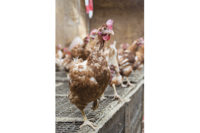Study reveals improved environmental impact of Canadian milk production
The quantity of milk produced per cow has increased by 13% from 2011 to 2016.

In an effort to demonstrate the continued progress of environmental efficiency of Canadian milk production, Dairy Farmers of Canada (DFC), Canada, released the findings of the latest lifecycle assessment of the industry's environmental performance.
The study, conducted by Groupe AGECO, Canada, shows that, once again, the Canadian dairy sector has one of the lowest carbon footprints in the world. The study assesses several environmental issues, including carbon footprint, water consumption and land use. Results indicate that environmentally-friendly farm practices, such as more crop rotations, better feed, reduced tillage and precision agriculture techniques, as well as increased milk production per cow explain improvements in those environmental profiles. In fact, the quantity of milk produced per cow has increased by 13% from 2011 to 2016.
"I'm really proud of the work done by all Canadian dairy farmers in adopting environmentally-friendly farming practices," says Pierre Lampron, president of DFC. "As a result of farmers increasing efficiency, productivity and innovation, Canada's dairy footprint on the environment is minimal and decreasing. Our carbon footprint, water consumption and land use associated with the production of a liter of milk have decreased significantly between 2011 and 2016. Dairy Farmers of Canada and other dairy organizations are committed to continue making improvements over time."
Key findings of the study entail:
- Milk produced in Canada has a lower footprint than average; a liter produced in Canada emits 0.94 kg CO2 eq, which is about 1/3 the greenhouse gas (GHG) emissions compared to the global average.
- Carbon footprint, water consumption and land use associated with milk production have decreased by 7%, 6% and 11%, respectively, in the past 5 years.
- As a result of improvements in animal nutrition, genetics and housing, milk production per cow increased by 13% since 2011.
Looking for a reprint of this article?
From high-res PDFs to custom plaques, order your copy today!









